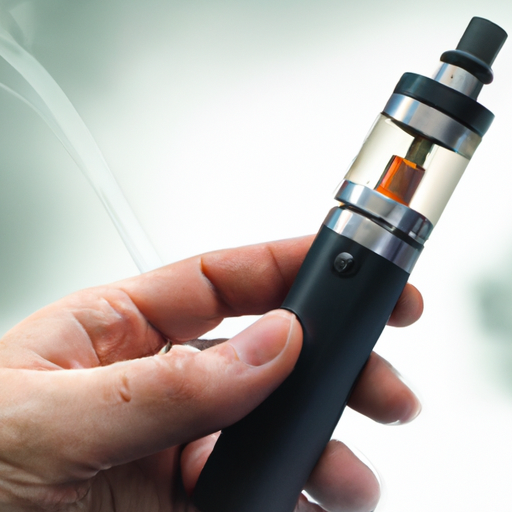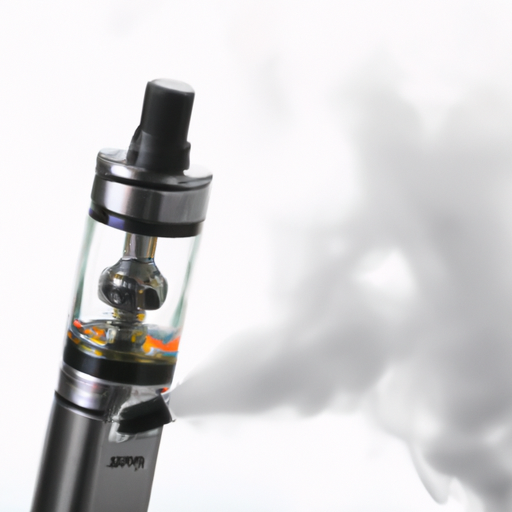Imagine holding in your hand a sleek, modern device that effortlessly transforms liquid into aromatic vapor. With its discreet design and precise functionality, this portable companion has revolutionized the way people indulge in their favorite flavors. Welcome to “A Comprehensive Guide to Vape Pens: Operation and Function.”
In the forthcoming article, we will demystify the world of vape pens, those fascinating gadgets that have become increasingly popular in recent years. From understanding the basic mechanics to exploring the wondrous interplay between temperature, coil, and e-liquid, this guide will equip you with all the knowledge necessary to navigate the realm of vaping with confidence. So, whether you are a vaping enthusiast or simply curious about the phenomenon, let us embark on an illuminating journey to uncover the inner workings of these remarkable devices. Prepare to witness the captivating fusion of technology, artistry, and pleasure!
1. What are vape pens?
1.1 Definition and Overview
Vape pens, also known as vaporizer pens or e-cigarettes, are portable electronic devices that allow you to inhale vaporized substances. They are designed to mimic the experience of smoking traditional cigarettes but without the harmful effects of tobacco. Vape pens have gained popularity among smokers and non-smokers alike as a less harmful alternative and a trendy way to enjoy various substances.
1.2 Types of Vape Pens
There are different types of vape pens available in the market, each catering to specific preferences and needs. These include:
- Disposable Vape Pens: These are pre-filled with e-liquid or oil and are disposed of after use. They are a convenient option for beginners or occasional users.
- Refillable Vape Pens: These vape pens allow you to refill the e-liquid or oil, providing more flexibility and customization options. They usually come with replaceable cartridges or tanks.
- Dry Herb Vape Pens: Designed specifically for dry herbs, these vape pens heat the herbs to produce vapor without combustion. They offer a more natural and aromatic experience.
- Concentrate Vape Pens: These vape pens are used for vaping cannabis concentrates, such as wax or oil. They have a higher heat output to vaporize the thicker substances.
2. Components of a Vape Pen
2.1 Battery
The battery is the power source of a vape pen. It provides the necessary energy to heat the atomizer and vaporize the e-liquid or other substances. Vape pen batteries come in different capacities, which determine the device’s battery life. Some batteries are built-in and rechargeable, while others are removable and require external charging.
2.2 Atomizer
The atomizer is a vital component of a vape pen responsible for heating the substance to generate vapor. It consists of a coil that heats up when the battery is activated. The coil comes in various materials, such as Kanthal, stainless steel, or ceramic, each with its own heating properties. To ensure efficient vaporization, it is important to clean and maintain the atomizer regularly.
2.3 Cartridge or Tank
The cartridge or tank holds the e-liquid or other substances in a vape pen. In disposable vape pens, the cartridge is pre-filled and non-refillable. Refillable vape pens usually have a removable cartridge or tank that allows you to fill it with your desired e-liquid or substance. Cartridges and tanks come in different sizes and capacities, providing options for different vaping preferences and storage needs.
2.4 Mouthpiece
The mouthpiece is the top part of a vape pen through which you inhale the vapor. It is usually made of heat-resistant materials, such as plastic or ceramic, to ensure comfortable and safe inhalation. Some vape pens have interchangeable mouthpieces to accommodate personal preferences or hygiene concerns. Regular cleaning of the mouthpiece is important to maintain the purity and quality of the vapor.

3. How Vape Pens Work
3.1 Battery and Power
When you activate the battery of a vape pen, it supplies energy to the atomizer. The battery’s power output determines how quickly the substance heats up and vaporizes. Higher voltage or wattage settings result in more intense heat and faster vapor production. However, it is essential to find the right balance to prevent burning the substance or harming the atomizer.
3.2 Heating Element
The heating element, usually a coil, is responsible for converting the electrical energy from the battery into heat. The coil’s resistance and material determine the heating properties. When the battery is activated, the coil heats up, reaching a temperature high enough to vaporize the e-liquid or other substances in the cartridge or tank.
3.3 E-liquid Delivery
In vape pens that use e-liquids, a wick or cotton material is used to absorb the liquid from the cartridge or tank. When the coil heats up, the e-liquid on the wick or cotton is vaporized, producing the vapor that is inhaled. The size and design of the wick or cotton affect the e-liquid delivery and the overall vaping experience.
3.4 Inhalation and Vapor Production
When you inhale through the mouthpiece, air is drawn over the coil and vaporizes the e-liquid or substance. This vapor is then inhaled into your lungs, providing a similar sensation to smoking. The amount of vapor produced depends on factors such as the power settings, airflow, and the viscosity of the e-liquid or substance being vaporized.
4. Operating a Vape Pen
4.1 Charging the Battery
To ensure uninterrupted vaping sessions, it is crucial to keep your vape pen’s battery charged. Most vape pens come with a USB charging cable that can be connected to a power source, such as a computer or wall adapter. It is essential to follow the manufacturer’s instructions for charging and avoid overcharging the battery, as it may reduce its lifespan.
4.2 Preparing the Cartridge
If you are using a refillable vape pen, you need to prepare the cartridge before use. Unscrew the mouthpiece or the top part of the cartridge and carefully fill it with your chosen e-liquid or substance. Take care not to overfill, as it may cause leakage or affect the overall performance of the vape pen. Once filled, attach the mouthpiece back securely.
4.3 Powering On and Off
To power on your vape pen, typically you need to press the device’s power button multiple times within a specified sequence. The exact method may vary depending on the vape pen model. To power off, repeat the same sequence or follow the manufacturer’s instructions. Powering off when not in use helps conserve battery life and prevents accidental activation.
4.4 Adjusting Temperature or Power Settings
Some vape pens allow you to adjust the temperature or power output to customize your vaping experience. Higher temperatures result in denser vapor, while lower temperatures provide smoother hits. Refer to the user manual or the manufacturer’s instructions to learn how to adjust these settings properly. Experimenting with different settings can help you find your preferred vape experience.
4.5 Inhaling and Vaporizing
Once your vape pen is prepared and powered on, it’s time to start vaping. Place the mouthpiece between your lips, press the power button (if necessary), and inhale slowly and steadily. Avoid applying excessive suction, as it may cause leakage or reduce the lifespan of the atomizer. Take short breaks between inhales to allow the vape pen to cool down if necessary.

5. Safety Precautions
5.1 Handling E-liquids
When handling e-liquids, it is important to follow basic safety measures. Keep them away from children and pets, as they may contain nicotine or other potentially harmful substances. Store e-liquids in cool, dry places, away from direct sunlight or heat sources. Always check the expiration date and dispose of expired or unused e-liquids properly, following local regulations.
5.2 Battery Safety
To prevent accidents and ensure the longevity of your vape pen, it is crucial to practice battery safety. Avoid exposing the battery to extreme temperatures or water, as it may damage the device or lead to battery failure. Only use the charger provided by the manufacturer and avoid leaving the battery charging unattended. If you notice any damage or unusual behavior with the battery, discontinue use and seek professional assistance.
5.3 Cleaning and Maintenance
Regular cleaning and maintenance of your vape pen are necessary for optimal performance and longevity. Follow the manufacturer’s instructions for cleaning the different components, such as the mouthpiece, cartridge, and atomizer. Avoid using harsh chemicals that may affect the taste or quality of the vapor. Regularly inspect the vape pen for any signs of wear or damage, and replace faulty or worn-out parts as needed.
In conclusion, vape pens offer a convenient and less harmful way to enjoy various substances and flavors. Understanding the different components and how they work is key to operating a vape pen effectively. Following safety precautions and proper maintenance guidelines ensures a long-lasting and enjoyable vaping experience. Remember, vape pens should be used responsibly and in accordance with local regulations. Happy vaping!

